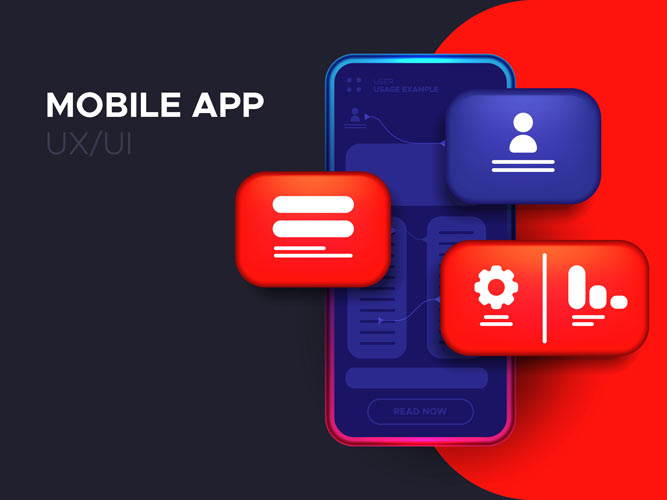AI and machine learning are changing how we use our smartphones. They’re making apps smarter, offering personalized recommendations and powering voice assistants. If you’re building or updating an Android app, these technologies can give you a leg up on the competition.
This article will show you how to add AI and ML to Android apps, explain their benefits, explore their potential uses, and demonstrate how Arobit can support you in this process.
Why AI and ML Matter in Android App Development
AI and ML aren’t just buzzwords—they’re practical tools that can enhance your app’s user experience, introduce new features, and streamline your business operations. These are some of the main ways they contribute:
- User engagement that’s more effective through customisation
- Instant data analysis for smarter choices
- Automation that has an impact on productivity and cuts down manual work
- Improved security by monitoring behaviour and noticing odd activity
Key Ways to Use AI & ML in Android Apps
Working out where and how AI and ML fit in your app is the first step. Here are some of the most common and helpful ways to use them:
1. Customisation and Recommendations
ML algorithms can examine how users act and what they enjoy to suggest content or products that suit their tastes.
2. Voice and Language Processing
Apps can comprehend natural language and even respond verbally using technologies such as Google’s ML Kit and TensorFlow Lite.
3. Image Recognition
This is great for online stores, medical services, and social networks—AI can identify and categorise images.
4. Chatbots and Virtual Assistants
AI-powered chatbots give quick help and guidance, making users happier.
5. Predictive Analysis
Forecast trends and user behaviours to introduce proactive features such as alerts or smart tips.
Step-by-Step Guide to Adding AI & ML to Android Apps
Here’s a simple plan to help you understand how the integration works.
1. Set the Goal
Figure out the exact issue your AI/ML integration aims to fix. This might involve boosting user engagement, making tasks automatic, or looking at data in your Android app.
2. Choose the Right Tools
Select tools and frameworks that mesh well with Android:
- TensorFlow Lite
- ML Kit by Google
- PyTorch Mobile
- Firebase ML
3. Collect and Prepare Your data.
ML models need quality data. Gather previous user actions, images, or any helpful data to train your model.
4. Create Your ML Model
You can develop your model using Python tools on a server and then convert it to TensorFlow Lite so it runs on smartphones.
5. Add the Model to Your App
Use Android Studio to incorporate your trained model with the appropriate APIs. Make sure it runs efficiently without quickly draining the phone’s battery.
6. Test
Build mock-ups of real-world scenarios to verify if your AI/ML features function as intended in various environments.
7. Release and Monitor
After going live, track how your AI features perform and continue to improve the model with new data.
Tips for Integrating AI/ML
- Start small. Kick off with a single AI-powered feature and grow step by step.
- Keep it lightweight. Mobile devices have limited resources, so make sure your models operate efficiently.
- Prioritise privacy. Handle user data with care and comply with regulations like GDPR.
- Ensure user-friendliness. AI ought to simplify and enrich the user experience, not make it more complex.
How Arobit Can Help
At Arobit, we create intelligent, user-friendly mobile apps. As a trustworthy mobile app developer, we support companies to integrate AI and ML capabilities into their apps using proven technologies and tailored strategies.
If you’re building a new app or upgrading an existing one, our Android app development services incorporate intelligent features supported by real-world performance and potential to grow.
Why Choose Us?
- Knowledge of TensorFlow Lite, ML Kit, and other cutting-edge tools.
- Full support from training models to deploying them in real scenarios.
- Familiarity with health, retail, and education sectors
- Scalable design and clean coding practices
To sum up
Integrating AI and ML into Android apps goes beyond technology—it aims to provide your users with more intelligent, faster, and user-friendly experiences. With the right strategy and a capable partner, even smaller companies can take advantage of these innovative concepts.
Asked Questions
Q1. Is it expensive to add AI to an Android app?
The price changes depending on how complicated the features are. Adding basic elements like chatbots or image recognition can be cheap if you use off-the-shelf APIs.
Q2. Is a large amount of data required to get started?
Not always. You can start with smaller data sets and grow them bit by bit over time. Many tools also offer pre-trained models for you to use.
Q3. Will AI make my app slower?
Not if you do it. Using lightweight models and writing clean code helps keep your app running .
Q4. How long does it take to add ML features?
Time frames vary. Basic features might need a few weeks, while complex projects could take several months. At Arobit, we give you a straightforward plan based on your needs.
Q5. Can Arobit build a custom AI model for my company?
Yes. We offer solutions made just for you—training your models or using open-source ones depending on your goals and what your industry needs.



1 Comment
Pingback: Save Big on Airport Parking in Frankfurt: A Complete Guide